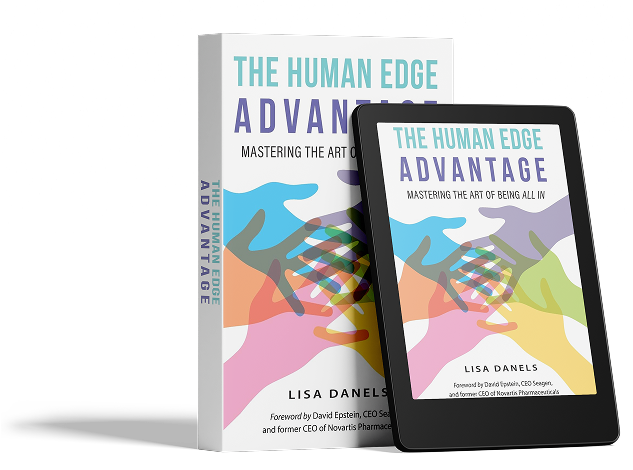This blog is dedicated to my father who passed away last year. He taught me to take risks and to strive for excellence in all that I do.
As I reflect back to the earliest part of my career, I realized I progressed haphazardly. After going through an internship in university I was aware I wanted a career in helping individuals and leaders be more effective and learn new skills. I didn’t have these words back then but I wanted to unlock human potential. But that is where it stopped. My first thought was to get into a great company and I assumed the rest would fall into place.
Fullfilling your dreams is all about exploring possibilities.
My dad being an Aerospace Engineer could not help me. He was more concerned with achieving a certain level of leadership than anything else. He was a true expert and loved what he did. He designed software systems for the space and the defense industry, His greatest achievement was working on the Apollo Mission, helping put a man on the moon. That was his legacy, his purpose and what he felt was his greatest professional contribution.
He always struggled to go from being a software engineer into a leadership position. His experience was no different from most of ours where we pick of the subtle messages that leadership positions are more prestigious, better paid, more sought out, and should be on everyone’s career trajectory. However, we know not everyone is suited to be a manager or leader. According to a recent Gallup poll of more than one million employed U.S. workers concluded that the number one reason people quit their jobs is a bad boss or immediate supervisor. Some 75 percent of workers who voluntarily left their jobs did so because of their bosses and not the position itself.
75% of workes who voluntarily left their jobs did so becauseof their bossess and not the position itself. Gallup 2020
My father’s skills and passion did not match the leadership profile and it left him feeling inadequate that maybe he was doing something wrong. In truth, he was a deep expert and loved what he did. I discovered this the day when we traveled to Washington D.C. to the Smithsonian Air and Space Museum. We stood in one of the large halls looking up at the Apollo capsule. He looked up with pride and said “Lisa this is what I worked on early in my career. I helped bring a man to the moon.” The pride emanated from every cell in his being. I was too young to remember this as a child but there was a strong message at that moment, do what you love.
So, getting back to my own career and the advice my father gave me “Lisa become a Vice President.” That’s how you know you’ve really made it. It stayed in the recesses of my mind for a long time but I never let it dominate my career choices. I just wanted to grow my skills and have a business impact.
In all honestly, I was not very strategic about my career at all. No one really sat down with me and matched up my skills to where I could excel. It was a case of trial and error. Of course, there were some generic assessment tools I took over time that confirmed my path but I was never coached by a manager on where I could use my strengths or what was the best career trajectory for me. So, I followed an expert pathway until one day I fell into a management role. It was a hard transition with lots of painful experiences that no one prepared me for or even asked if that is what I wanted to do. I just happened to solve a complex training problem so they made me the manager of the group.
There were a few forks in the road about going into the business or taking on a generalist HR role but I really enjoyed what I did and I didn’t want to start over again. I did reach the Vice President level while my dad was alive. For me it was anticlimactic and to my dad, he wanted me to show my status to the world by swapping out my Mini Cooper red convertible for a BMW. Instead of swapping out the car, I swapped out my career and went from being a leader and employee to being an entrepreneur. This allowed me to follow my real passion for creating products and services that could have a profound impact on the world. On the deepest level, I wanted to wake people up and return them back to their true power. No more playing small but really going for their dreams.
On the deepest level, I wanted to wake people up and return them back to their true power. No more playing small but really going for their dreams.
As I look back on my own career, I wish there was someone along the way I could have spoken to about the different leadership archetypes connected to strengths and how this could have more readily shaped my career. Manfred F. R Kets de Vries a management scholar from IMD conducted a research study to discover there are eight leadership archetypes that can shape careers and leaders teams.
In my experience of working as an executive coach and organizational specialist, I’ve come to discover there is one additional archetype that businesses need to bring vision and strategy to life and that is the architect. When we understand our dominant archetypes then we can leverage them more effectively to make more informed career choices and decide if we want to take the expert or leadership pathway when we are three to eight years in our career.
Below are the nine archetypes and I encourage you to linger on each one to see which one resonates with you. The first three like to focus in on ideas.
Visionary – An abstract and imaginative thinker, who sees the big picture and thinks in the long term.
Entrepreneur – A creative and driven individual, willing to take risks and persist in order to achieve results.
Innovator – An imaginative and creative problem solver, who seeks to realize and develop new ideas.
The next archetype is the Architect who is the bridge between ideas and results. They know how to take conceptual ideas and turn them into blueprints in order to bring imagination to life. Organizations fail to bring their strategies alive because they don’t have enough of this archetype.
Architect – An analytical individual, bridging the gap between big picture thinking and implementation, turning ideas into reality.
The next three archetypes focus on results and are highly achievement-driven. They want to see the tangible outcomes of their efforts. These include:
Deal Maker – A skillful negotiator, able to communicate in a clear manner and persuade others to gain buy-in.
Transformer – Recognizes and makes the most of change opportunities, willing to take risks and make difficult decisions.
Executer – A self-disciplined and persistent individual, actively driving tasks forward and putting structures in place to achieve results.
The next two archetypes focus on relationships and value people. They include:
Coach – Mentors who understand and inspire others, handling difficult interpersonal and group situations with ease.
Influencer – Skilled communicators who can tell a story to attract and hold the attention of others.
My three dominant archetypes are the Visionary, Deal Maker, and Coach and I see how these archetypes have informed my choices and how I show up as a leader.
Here at Human Edge, we created an assessment tool, CORE Potential, to enable companies and individuals to understand which pathway they are more suited for (expert or leader) and help them leverage their naturally occurring archetypes. When they have this insight early in our career then we can better coach others and plan for our career and use it as a for catalyst for success.





